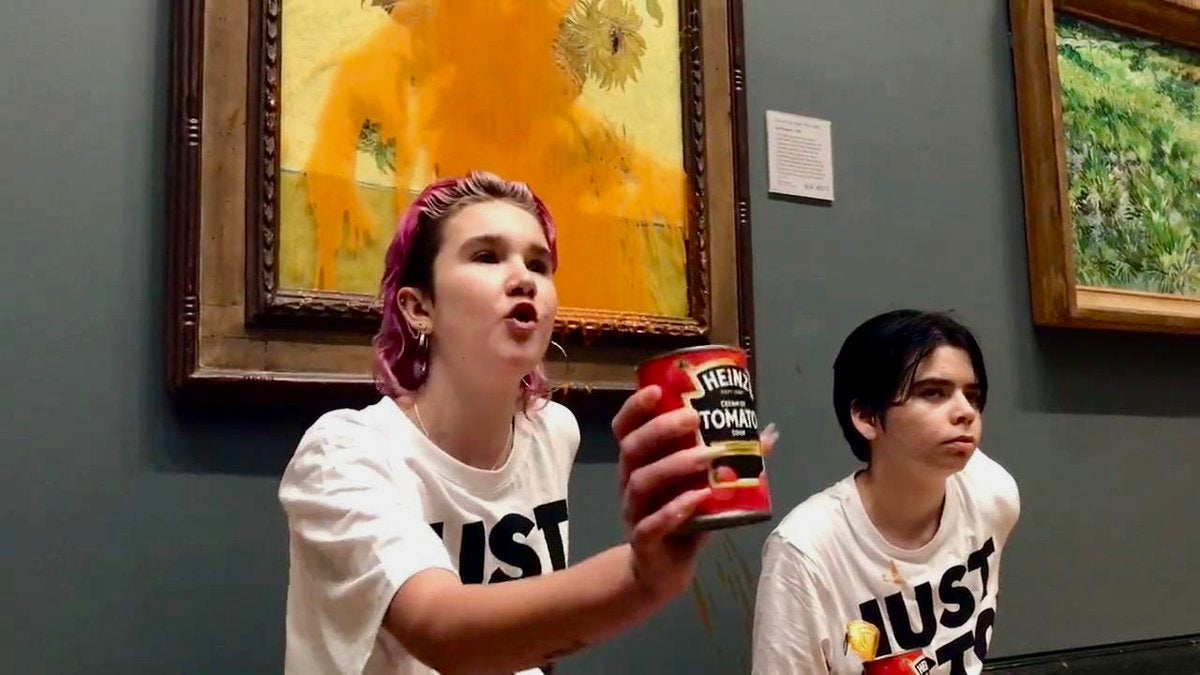
On Friday 14 October, Vincent Van Gogh’s 1888 masterpiece, Sunflowers, was targeted by Just Stop Oil protestors at the National Gallery in London.
The oil-on-canvas painting, which is protected by a glass cover, has an estimated value of £72.5m.
A National Gallery spokesperson told The Independent: “There is some minor damage to the frame but the painting is unharmed.”
It is one of the most popular paintings in the National Gallery, and is thought to be the picture that Van Gogh was most proud of.
It was painted during a period of optimism for the Dutch artist, while he awaited the arrival of his hero, the avant-garde painter Paul Gauguin.
Van Gogh had moved to Arles, in the south of France, with the hope of setting up a community of artists.
He made seven versions of the artwork, and he saw yellow as an emblem of happiness. In Dutch literature, the sunflower symbolises loyalty. The image of their decay also reflects the cycle of life and death.
The same year Van Gogh created Sunflowers, he cut off his ear and took it to the local brothel where he tried to give it to one of the sex workers.

In 1889, Van Gogh voluntarily entered the mental asylum at Saint-Rémy. He painted there, too, to keep his paranoid hallucinations at bay.
In 1890, at the age of 37 and having sold only one painting in his life, Van Gogh took his own life.







